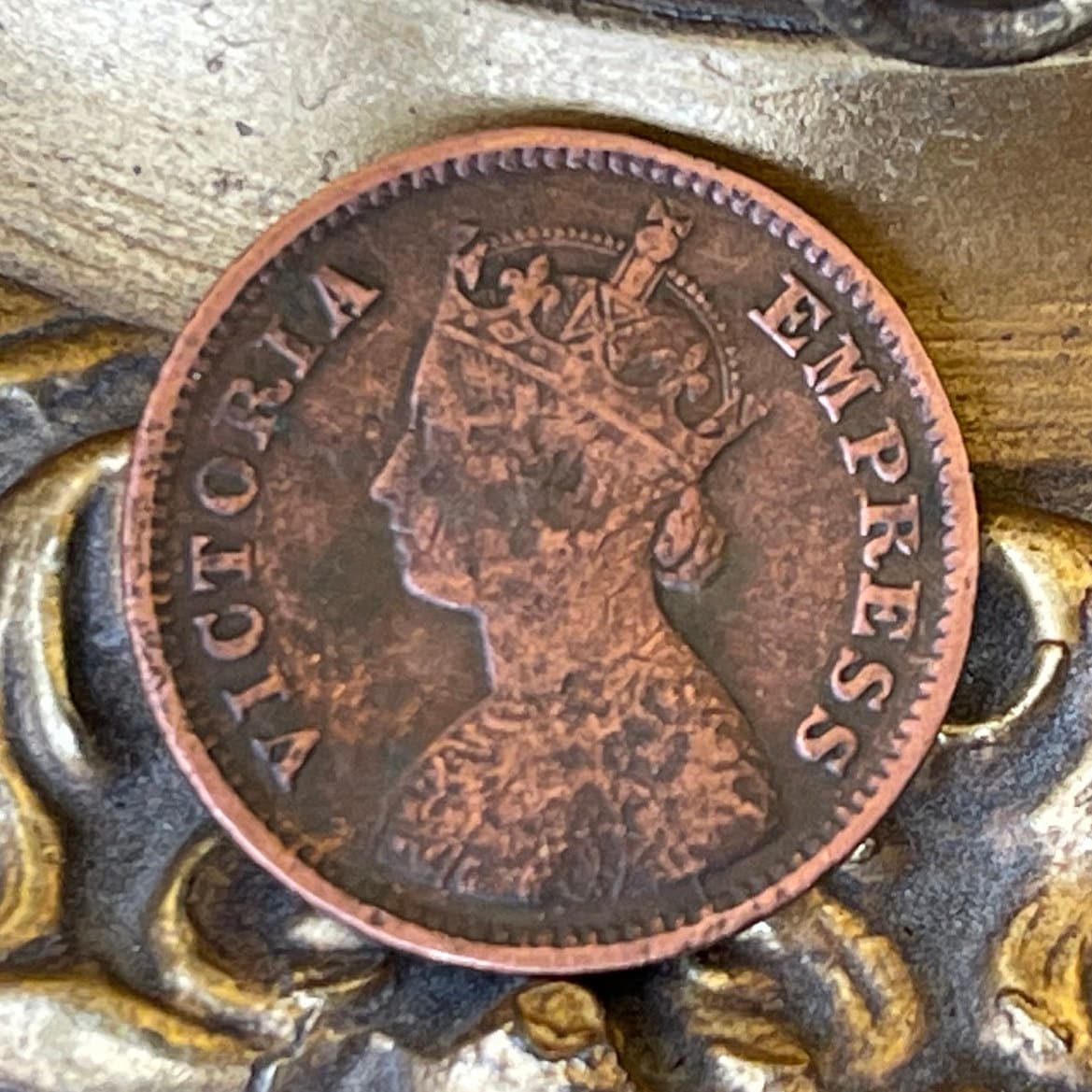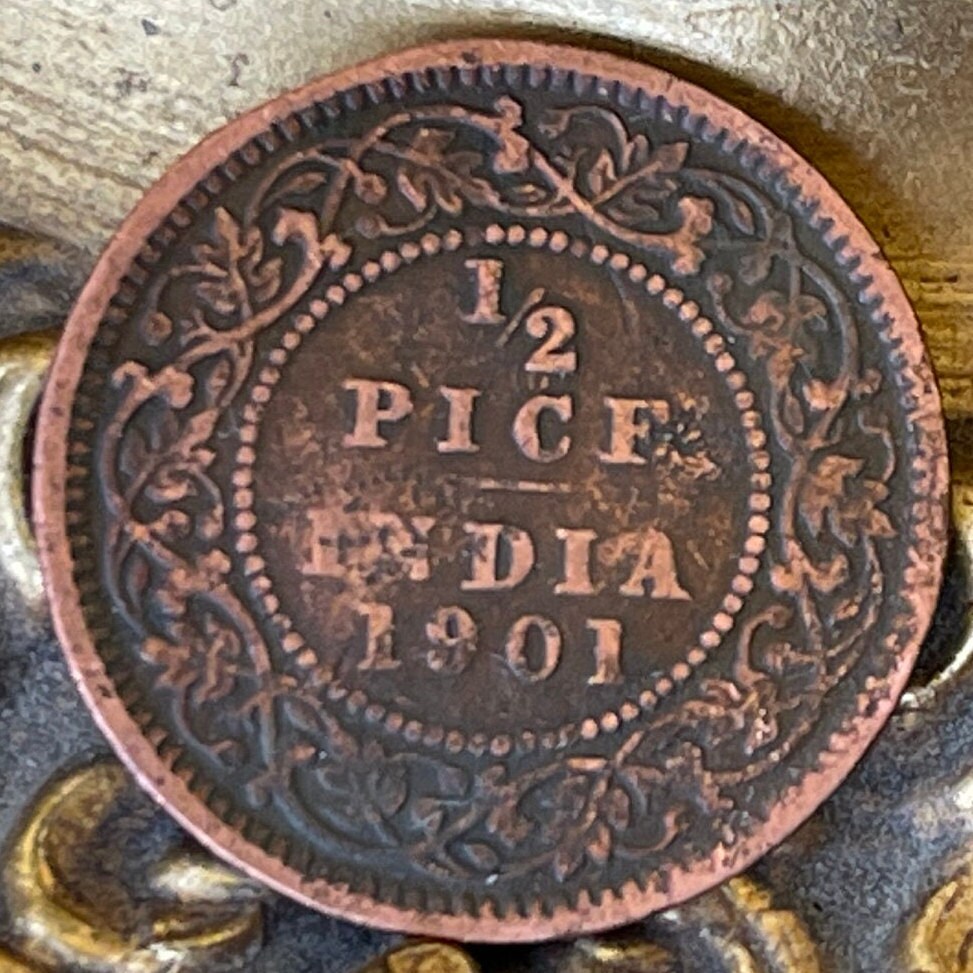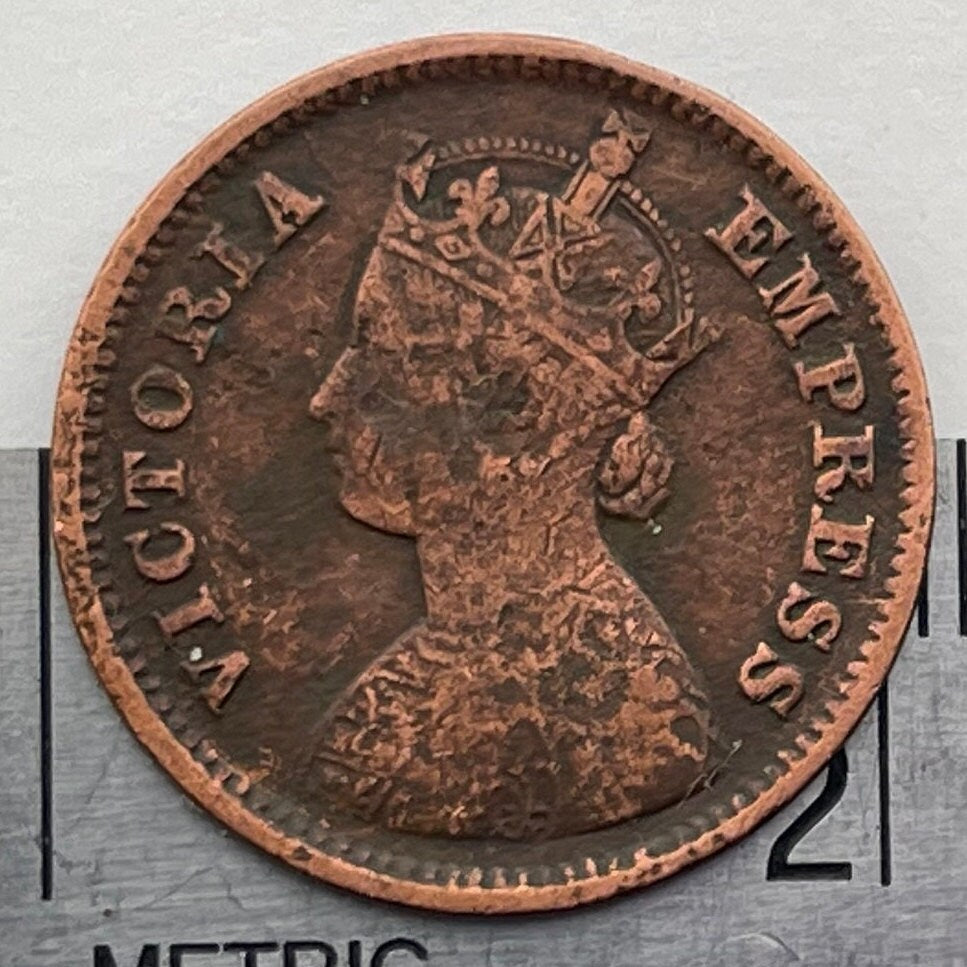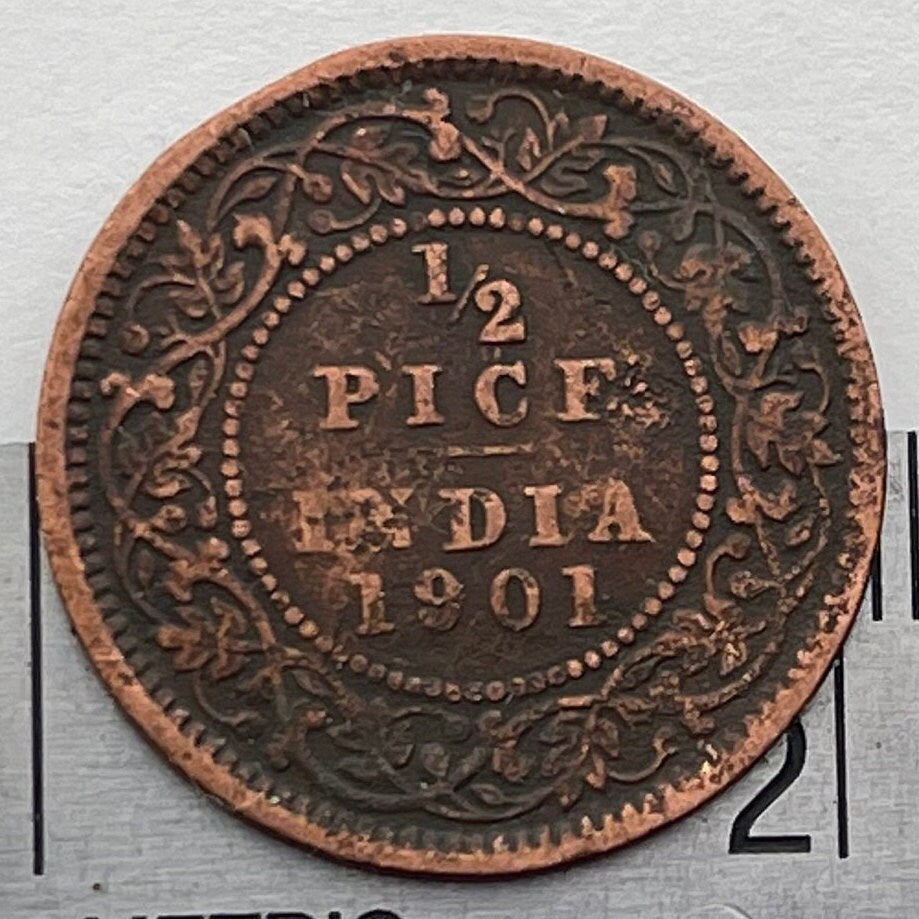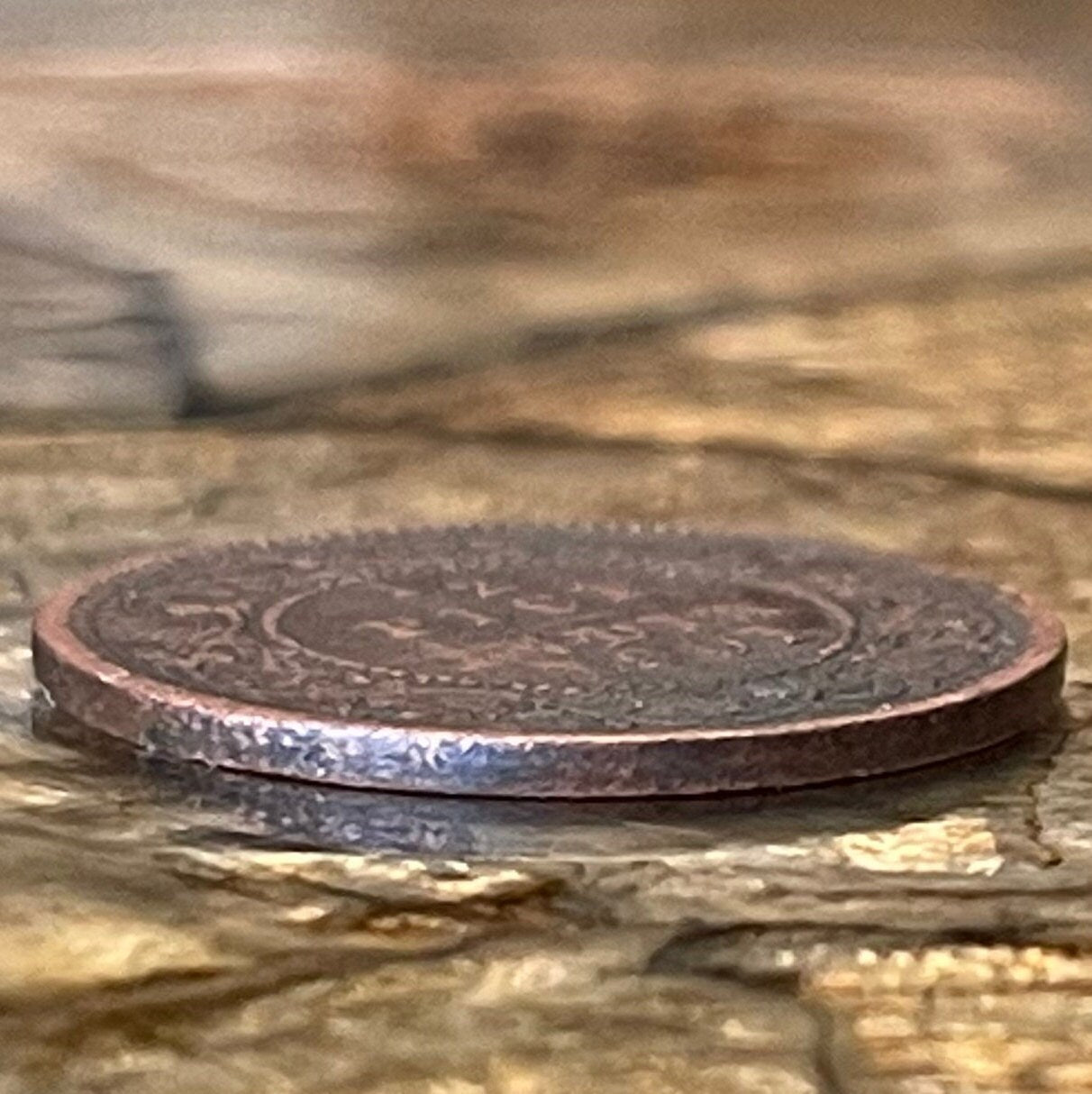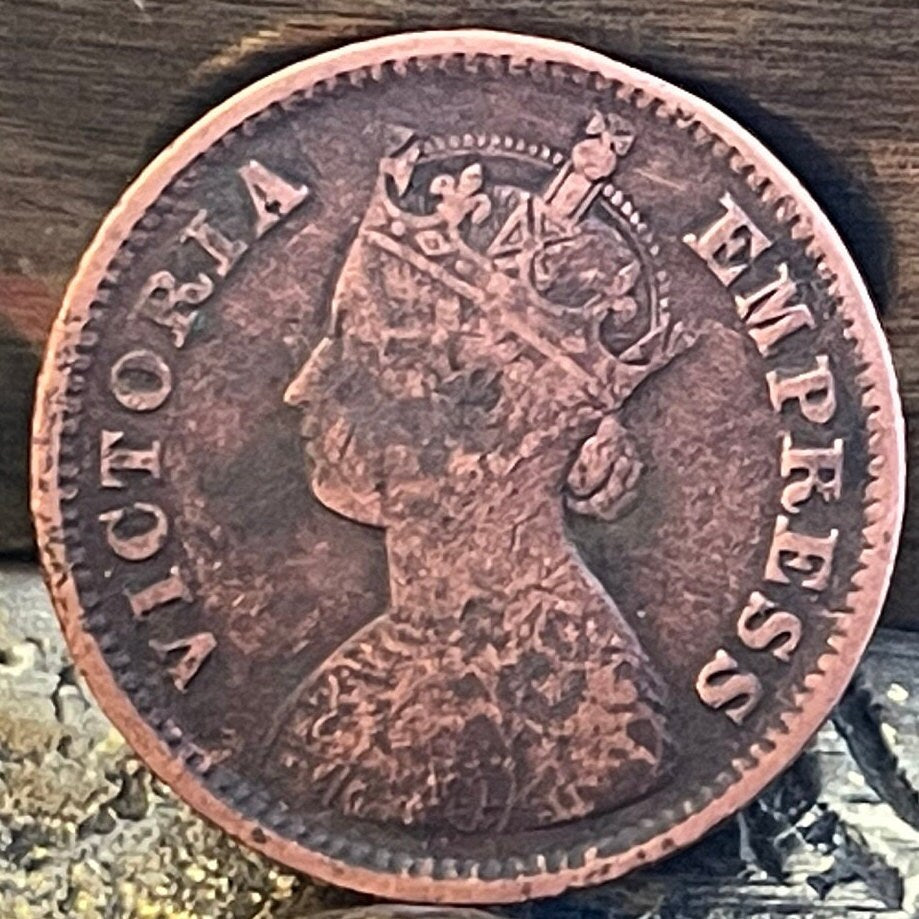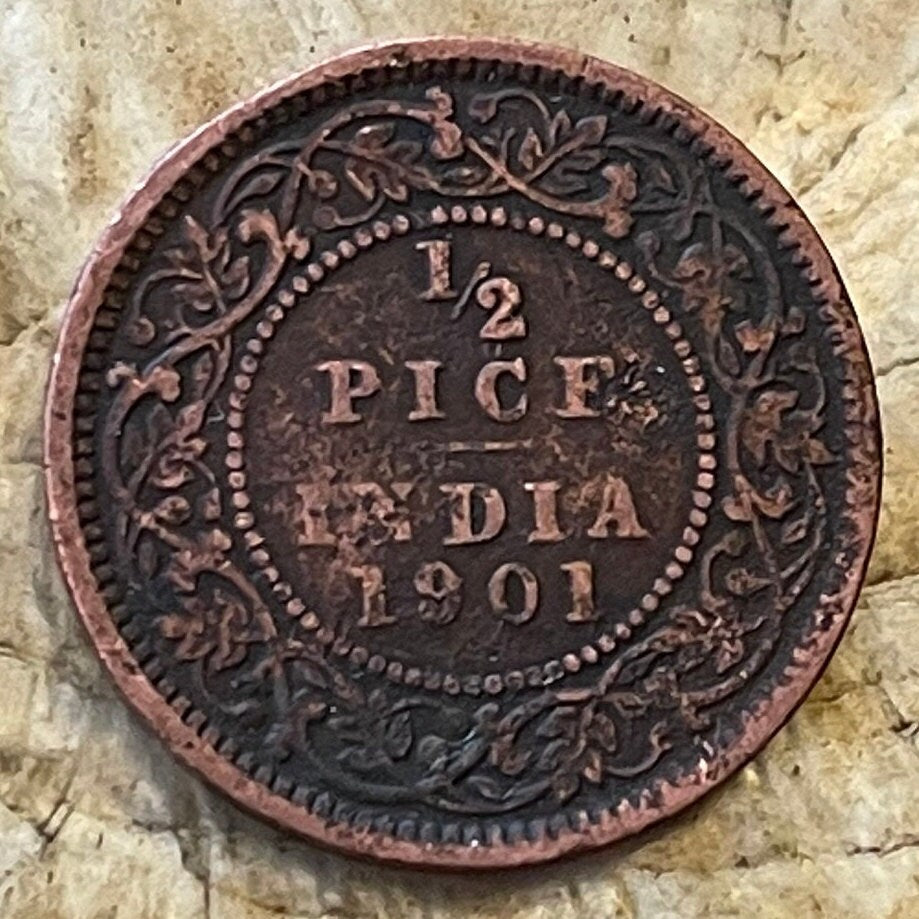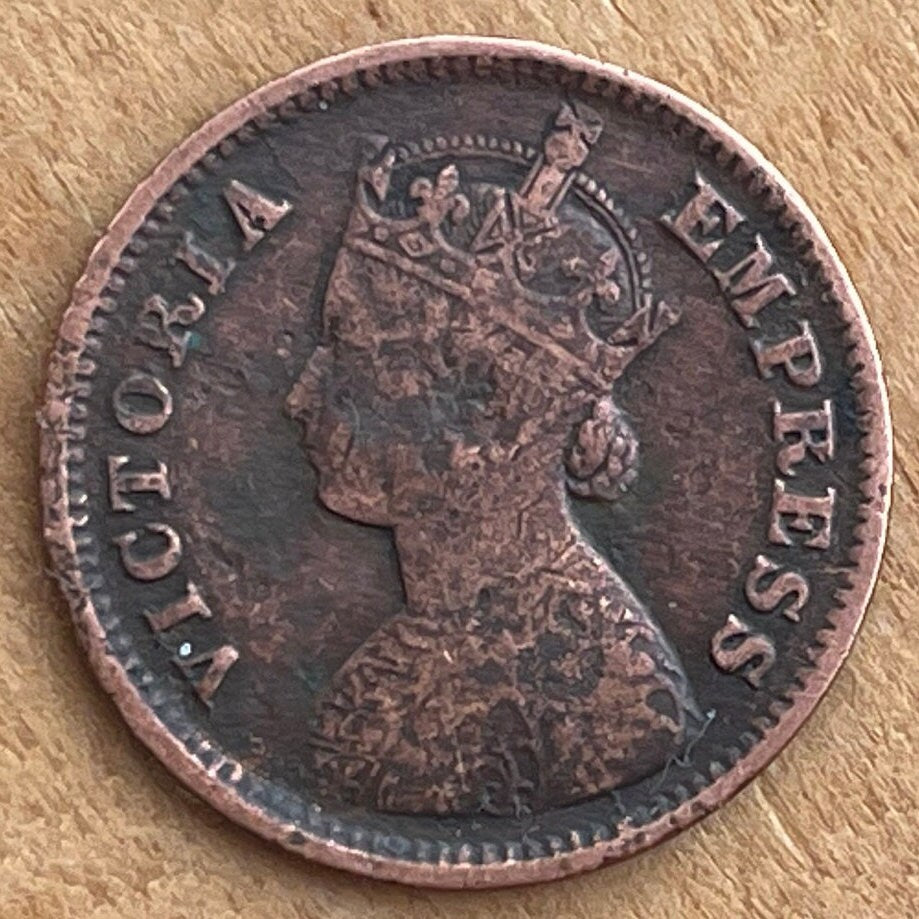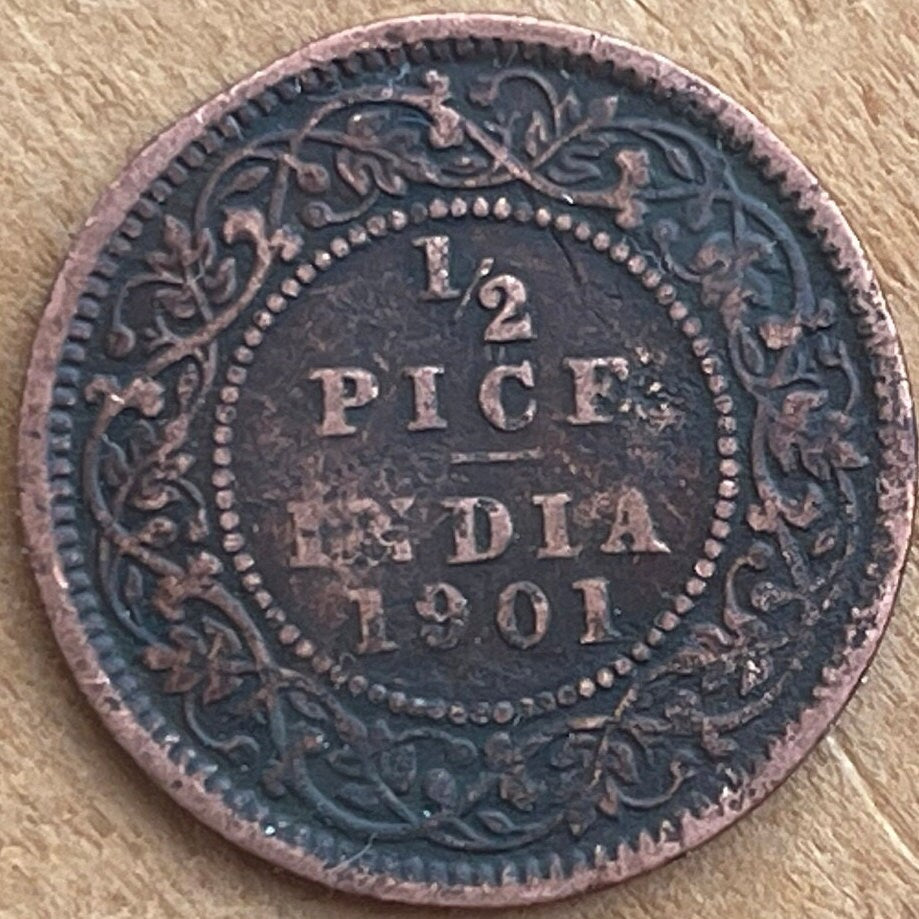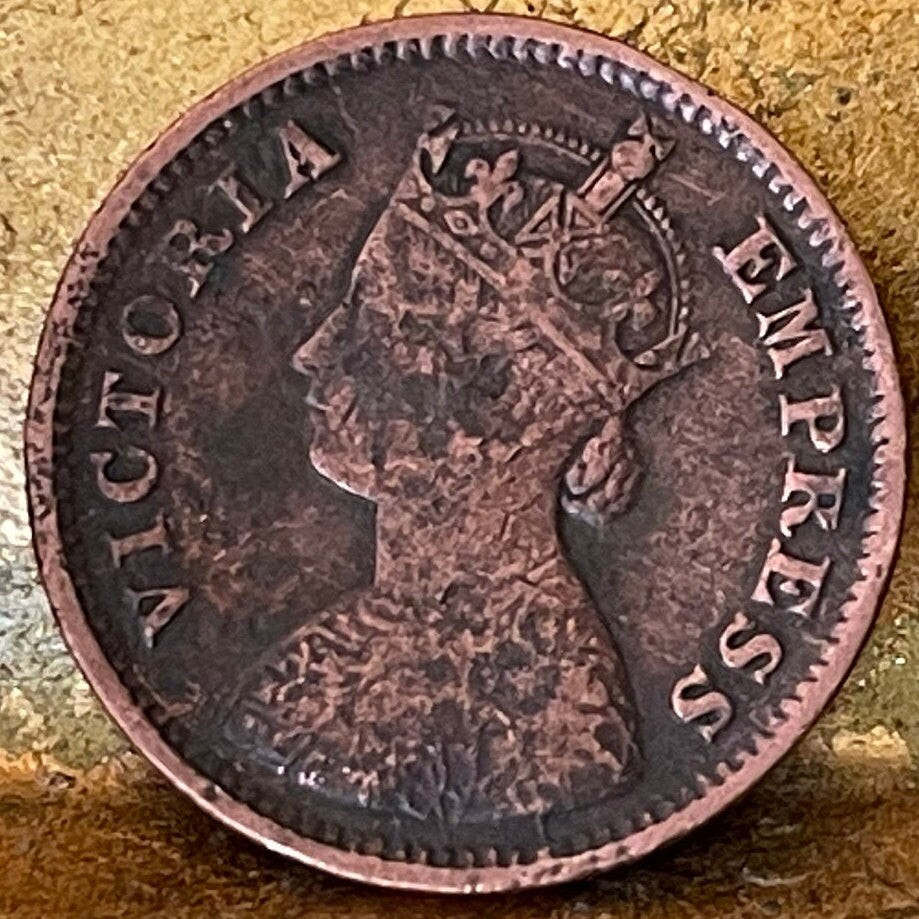elemintalshop
Queen Victoria Empress of India Half Pice British India Authentic Coin Money for Jewelry and Craft Making (British Raj) (Bun Head)
Queen Victoria Empress of India Half Pice British India Authentic Coin Money for Jewelry and Craft Making (British Raj) (Bun Head)
Couldn't load pickup availability
Queen Victoria Empress of India Half Pice British India Authentic Coin Money for Jewelry and Craft Making (British Raj) (Bun Head) (Second Portrait) (CONDITION: FINE)
Obverse: Crowned portrait facing left, divided legend, toothed rim. Second Portrait: Bun Head.
Lettering: VICTORIA EMPRESS
Reverse: Central beaded circle; value at top, dividing line, country, date. Ornate intertwined leaves outside, toothed rim
Lettering: 1/2 PICE
INDIA
Features
Issuer India - British (British India)
Queen Victoria (1837-1901)
Type Standard circulation coin
Years 1885-1901
Value 1/2 Pice (1/128)
Currency Rupee (1862-1947)
Composition Copper
Diameter 21 mm
Thickness 1 mm
Shape Round
Technique Milled
Orientation Medal alignment ↑↑
Demonetized Yes
Number N# 17534
References KM# 484
Wikipedia:
Victoria (Alexandrina Victoria; 24 May 1819 – 22 January 1901) was Queen of the United Kingdom of Great Britain and Ireland from 20 June 1837 until her death in 1901. Known as the Victorian era, her reign of 63 years and seven months was longer than any previous British monarch. It was a period of industrial, political, scientific, and military change within the United Kingdom, and was marked by a great expansion of the British Empire. In 1876, the British Parliament voted to grant her the additional title of Empress of India.
Victoria was the daughter of Prince Edward, Duke of Kent and Strathearn (the fourth son of King George III), and Princess Victoria of Saxe-Coburg-Saalfeld. After the deaths of her father and grandfather in 1820, she was raised under close supervision by her mother and her comptroller, John Conroy. She inherited the throne aged 18 after her father's three elder brothers died without surviving legitimate issue. Though a constitutional monarch, Victoria privately attempted to influence government policy and ministerial appointments; publicly, she became a national icon who was identified with strict standards of personal morality.
Victoria married her first cousin Prince Albert of Saxe-Coburg and Gotha in 1840. Their children married into royal and noble families across the continent, earning Victoria the sobriquet "the grandmother of Europe" and spreading haemophilia in European royalty. After Albert's death in 1861, Victoria plunged into deep mourning and avoided public appearances. As a result of her seclusion, British republicanism temporarily gained strength, but in the latter half of her reign, her popularity recovered. Her Golden and Diamond Jubilees were times of public celebration. She died on the Isle of Wight in 1901. The last British monarch of the House of Hanover, she was succeeded by her son Edward VII of the House of Saxe-Coburg and Gotha.
******
Wikipedia:
The British Raj (from Hindi rāj: kingdom, realm, state, or empire) was the rule of the British Crown on the Indian subcontinent from 1858 to 1947. The rule is also called Crown rule in India, or direct rule in India. The region under British control was commonly called India in contemporaneous usage and included areas directly administered by the United Kingdom, which were collectively called British India, and areas ruled by indigenous rulers, but under British paramountcy, called the princely states. The region was sometimes called the Indian Empire, though not officially.
As "India", it was a founding member of the League of Nations, a participating nation in the Summer Olympics in 1900, 1920, 1928, 1932, and 1936, and a founding member of the United Nations in San Francisco in 1945.
This system of governance was instituted on 28 June 1858, when, after the Indian Rebellion of 1857, the rule of the British East India Company was transferred to the Crown in the person of Queen Victoria (who, in 1876, was proclaimed Empress of India). It lasted until 1947, when the British Raj was partitioned into two sovereign dominion states: the Union of India (later the Republic of India) and the Dominion of Pakistan (later the Islamic Republic of Pakistan and the People's Republic of Bangladesh). At the inception of the Raj in 1858, Lower Burma was already a part of British India; Upper Burma was added in 1886, and the resulting union, Burma was administered as an autonomous province until 1937, when it became a separate British colony, gaining its own independence in 1948. It was renamed Myanmar in 1989.
Share
